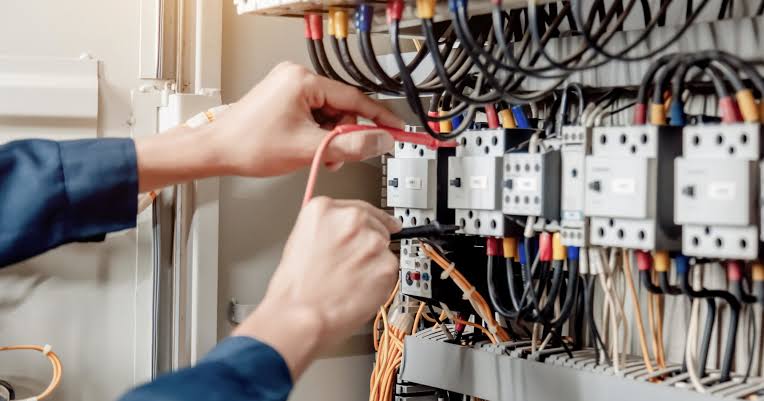
Reliable electricity is the backbone of modern society, powering homes, businesses, healthcare facilities, and critical infrastructure. It supports our daily activities, economic productivity, and overall quality of life. Ensuring a steady power supply is crucial for maintaining normalcy and enabling technological advancements.
Impact of Power Outages
Power outages disrupt everyday life, causing inconvenience and potential hazards. They can lead to economic losses, especially for businesses dependent on continuous operations. In healthcare, power failures can be life-threatening, affecting medical equipment and emergency services. Understanding the impact underscores the importance of efficient outage management by electrical service providers.
Role of Electrical Service Providers
Electrical service providers play a pivotal role in managing and mitigating power outages. They are responsible for maintaining the grid, responding to outages, and restoring power swiftly. Their expertise and preparedness are critical in minimizing the duration and impact of power disruptions.
Types of Power Outages
Planned Outages
Planned outages are scheduled interruptions designed to allow maintenance, upgrades, or repairs. These are communicated to customers in advance, minimizing inconvenience. They are essential for ensuring the long-term reliability and safety of the electrical grid.
Unplanned Outages
Unplanned outages occur unexpectedly due to unforeseen issues such as equipment failures, accidents, or extreme weather conditions. These are often more challenging to manage due to their sudden nature and potential widespread impact.
Rolling Blackouts
Rolling blackouts are controlled, and temporary power shutdowns are implemented to prevent a total grid collapse. They are usually a last resort during periods of high demand or when the grid is under severe strain. By rotating outages across different areas, service providers aim to balance the load and avoid prolonged disruptions.
Causes of Power Outages
Natural Causes
Storms
Severe weather, including thunderstorms, hurricanes, and blizzards, is a leading cause of power outages. High winds and lightning can damage power lines and equipment, while heavy snowfall or ice can cause physical strain on the infrastructure.
Earthquakes
Earthquakes can disrupt the power supply by damaging transmission lines, substations, and generation facilities. The seismic activity can lead to widespread outages and complicate restoration efforts.
Floods
Flooding can inundate electrical equipment, causing short circuits and failures. It poses a significant challenge for service providers, especially in low-lying and flood-prone areas.
Human-Related Causes
Accidents
Accidental damage to power lines and infrastructure can occur during construction, vehicle collisions, or other human activities. These incidents often lead to localized outages requiring immediate attention.
Vandalism
Deliberate acts of vandalism, such as tampering with equipment or cutting power lines, can cause significant disruptions. Protecting critical infrastructure from such threats is a constant concern for service providers.
Technical Failures
Equipment Malfunction
Aging or faulty equipment can fail, leading to power outages. Regular maintenance and timely upgrades are essential to prevent such incidents.
Overloaded Systems
During periods of high demand, such as heatwaves or cold snaps, the electrical grid can become overloaded, causing failures. Managing load and ensuring adequate capacity are crucial for preventing outages.
Immediate Response to Power Outages
Activation of Emergency Protocols
When an outage occurs, service providers activate emergency protocols to assess and respond swiftly. This involves mobilizing response teams, coordinating with local authorities, and prioritizing critical areas.
Communication with Affected Areas
Effective communication is key during outages. Service providers must inform the public about the situation, estimated restoration times, and safety precautions. Clear and timely information helps manage customer expectations and ensures safety.
Dispatching Repair Crews
Repair crews are dispatched to identify and fix the issues causing the outage. Their tasks include inspecting infrastructure, repairing damaged equipment, and restoring power as quickly as possible.
Assessment and Diagnosis
Identifying the Scope of the Outage
The first step in addressing a power outage is determining its scope. This involves identifying the affected areas and understanding the extent of the disruption.
Locating the Source of the Problem
Locating the exact source of the outage is crucial for effective restoration. This may involve inspecting physical infrastructure, analyzing grid data, and using diagnostic tools.
Use of Technology in Diagnosis
Smart Grids
Smart grids use digital technology to monitor and manage the flow of electricity. They provide real-time data on grid performance, helping service providers quickly identify and address issues.
Drones
Drones equipped with cameras and sensors are increasingly used for inspecting hard-to-reach infrastructure. They offer a safe and efficient way to assess damage and locate problems.
Sensor Networks
Networks of sensors installed on the grid can detect anomalies and pinpoint issues. These sensors provide valuable data for diagnosing problems and planning maintenance.
Restoration Process
Prioritizing Areas for Restoration
Restoring power to critical facilities, such as hospitals and emergency services, is a top priority. Service providers must also consider densely populated areas and regions with vulnerable populations.
Steps in the Restoration Process
Isolating the Problem
The first step is to isolate the problem area to prevent further damage and ensure safety. This may involve shutting down affected circuits and rerouting power.
Repair and Replacement
Repair crews then fix or replace damaged components. This can include repairing power lines, replacing transformers, or restoring substations.
Testing and Verification
Once repairs are complete, the system is tested to ensure it is functioning correctly. This includes checking for faults and verifying that power is restored safely.
Coordination with Local Authorities
Coordination with local authorities and emergency services is essential for effective outage management. This ensures a comprehensive response and facilitates resource sharing.
Communication During Outages
Informing the Public
Service providers must keep the public informed about the status of outages and restoration efforts. Clear and transparent communication helps manage expectations and ensures public safety.
Updates on Progress
Regular updates on the progress of restoration efforts are crucial. This can be done through various channels, including websites, social media, and mobile apps.
Use of Social Media and Apps
Social media platforms and dedicated apps are valuable tools for communicating with the public. They provide real-time updates and allow for direct interaction with customers.
Preventive Measures
Infrastructure Upgrades
Regular upgrades to infrastructure are essential for preventing outages. This includes replacing aging equipment, enhancing grid capacity, and incorporating advanced technologies.
Regular Maintenance
Routine maintenance helps identify and address potential issues before they cause outages. This involves inspecting and servicing equipment, trimming vegetation, and conducting safety checks.
Tree Trimming and Vegetation Management
Managing vegetation near power lines is critical for preventing outages caused by fallen branches or trees. Regular trimming and maintenance help reduce the risk of such incidents.
Technology in Power Outage Management
Smart Grids
Smart grids enhance the reliability and efficiency of the electrical grid. They use advanced technology to monitor and manage power flow, helping to quickly detect and address issues.
Advanced Metering Infrastructure (AMI)
AMI includes smart meters and communication networks that provide detailed data on electricity usage. This technology helps service providers identify outages and manage the grid more effectively.
Predictive Analytics
Predictive analytics uses data to forecast potential issues and optimize maintenance schedules. This proactive approach helps prevent outages and improve grid reliability.
Case Studies
Notable Power Outages and Responses
Examining notable power outages and the responses of service providers offers valuable insights. These case studies highlight best practices and lessons learned in outage management.
Lessons Learned
Lessons learned from past outages help improve future response strategies. Analyzing successes and challenges informs better planning and preparedness.
Challenges Faced by Service Providers
Harsh Weather Conditions
Extreme weather poses significant challenges for maintaining and restoring power. Service providers must be prepared for diverse conditions, from hurricanes to ice storms.
Resource Limitations
Limited resources, including personnel and equipment, can hinder outage response efforts. Efficient resource management and strategic planning are essential.
Regulatory Constraints
Regulations and policies can impact how service providers manage outages. Navigating these constraints requires careful planning and coordination with regulatory bodies.
Future Trends in Power Outage Management
Renewable Energy Integration
Integrating renewable energy sources, such as solar and wind, into the grid presents new challenges and opportunities. Service providers must adapt to these changes to ensure reliability.
Microgrids and Distributed Generation
Microgrids and distributed generation systems offer resilience by allowing localized power generation. These systems can operate independently during outages, enhancing reliability.
Advanced Storage Solutions
Energy storage solutions, such as batteries, play a critical role in outage management. They provide backup power and help stabilize the grid during disruptions.
Customer Support and Education
Resources for Customers During Outages
Providing resources and support to customers during outages is essential. This includes safety tips, outage maps, and information on how to report issues.
Educational Programs on Energy Conservation
Educational programs help customers understand how to conserve energy and reduce demand. This can alleviate strain on the grid and prevent outages during peak periods.
Government and Regulatory Involvement
Policies and Regulations
Government policies and regulations influence how service providers manage outages. Supportive policies can facilitate better planning and response.
Support During Major Outages
Government assistance during major outages is crucial. This can include financial aid, logistical support, and coordination with emergency services.
Conclusion
Summary of Key Points
Power outage management is a complex and critical task for electrical service providers. It involves immediate response, effective communication, and the use of advanced technology to restore power swiftly and safely.
The Evolving Landscape of Power Outage Management
As technology advances and the energy landscape evolves, service providers must adapt to new challenges and opportunities. Integrating renewable energy, utilizing smart grids, and adopting predictive analytics are key trends shaping the future.
Call to Action for Continued Improvement
Continuous improvement in outage management practices is essential. Investing in infrastructure, embracing innovation, and fostering collaboration among stakeholders will ensure a more resilient and reliable power supply for the future.



